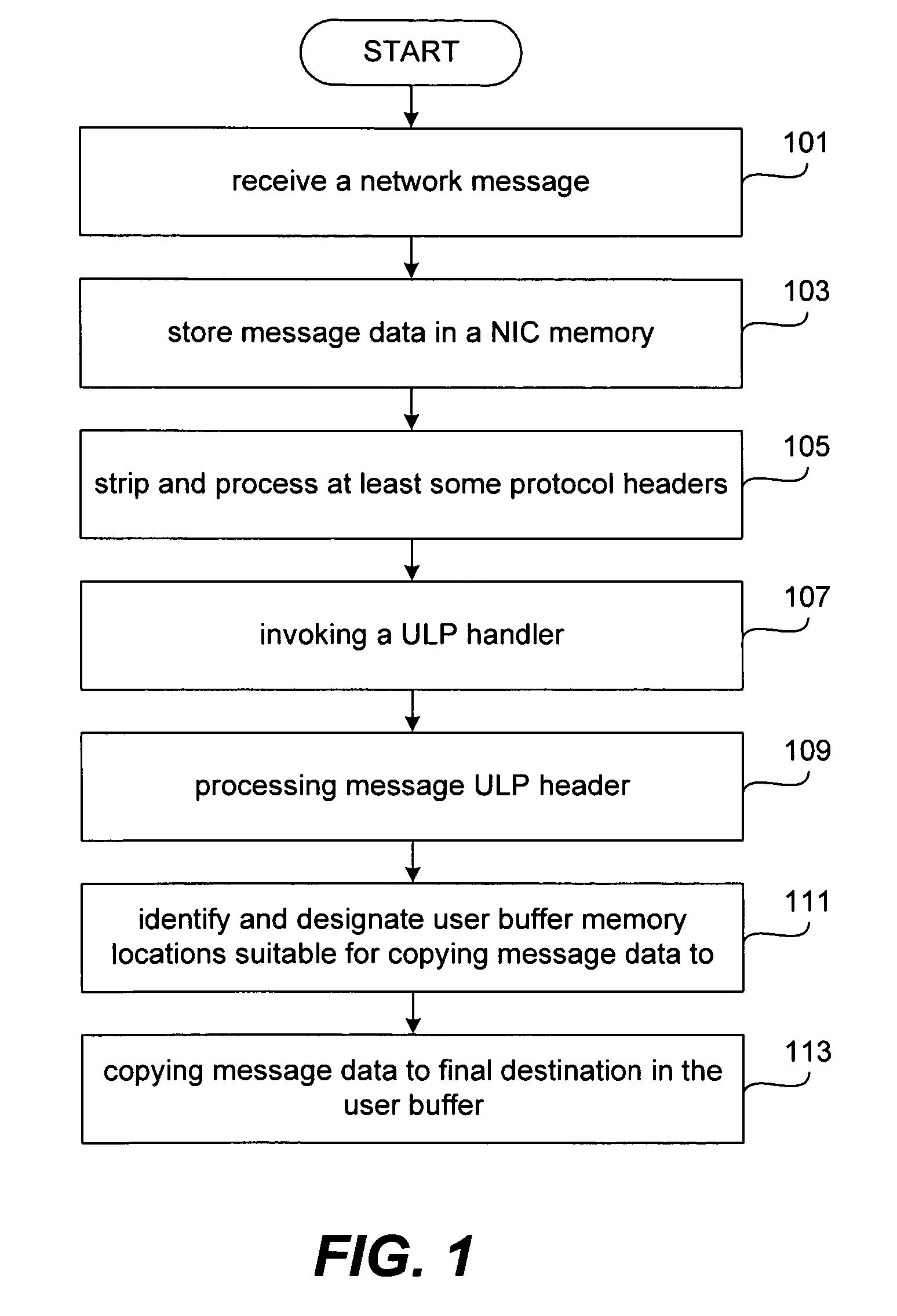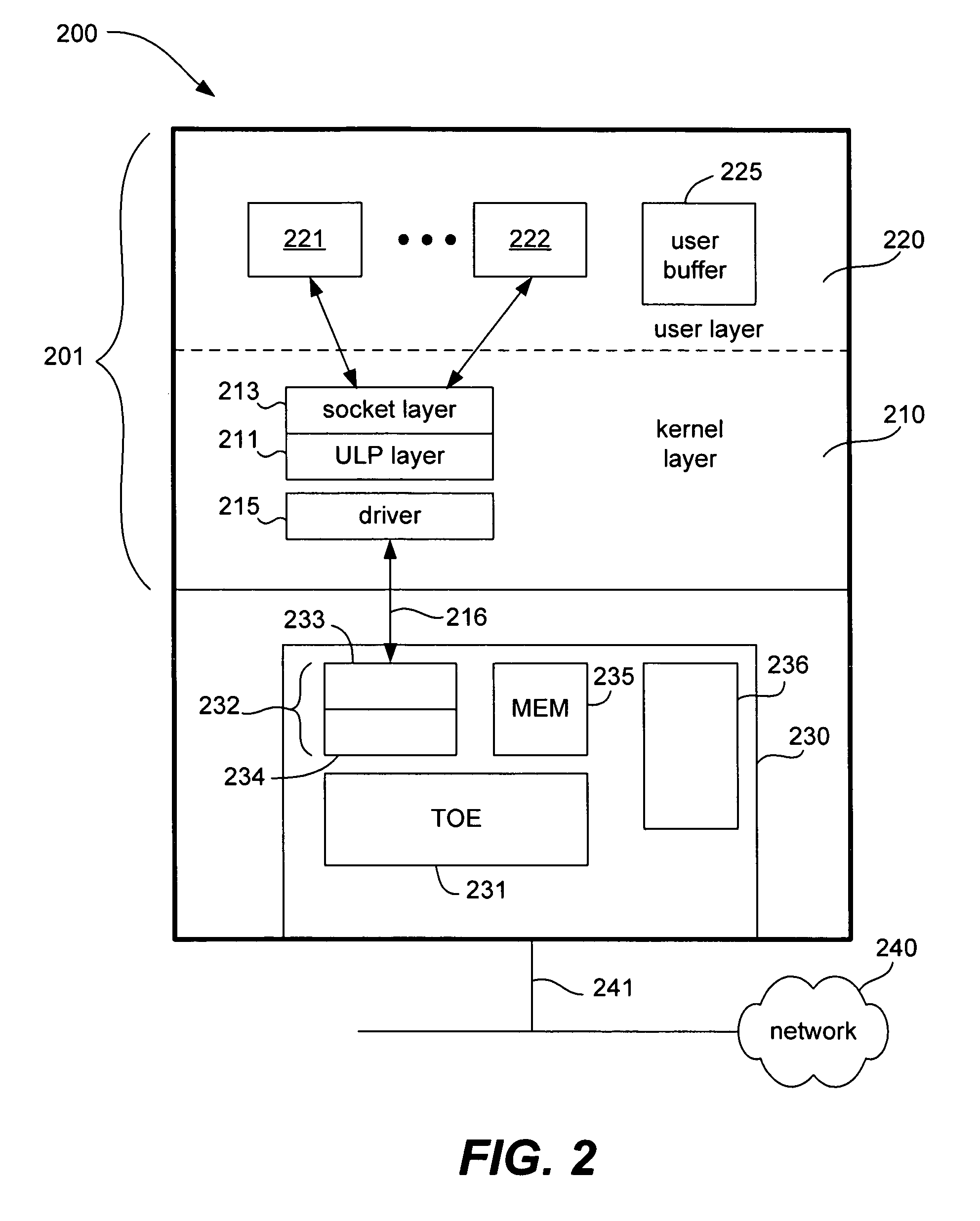System and method for conducting direct data placement (DDP) using a TOE (TCP offload engine) capable network interface card
a network interface card and data transfer technology, applied in data switching networks, instruments, program control, etc., can solve the problems of cpu overflow, low data processing efficiency, and high data transfer ra
- Summary
- Abstract
- Description
- Claims
- Application Information
AI Technical Summary
Benefits of technology
Problems solved by technology
Method used
Image
Examples
Embodiment Construction
[0030]The invention relates to techniques, systems, and methods for conducting direct data placement of data from a network interface card to a user buffer. Embodiments of the invention are discussed below. However, those skilled in the art will readily appreciate that the detailed description given herein with respect to these figures is for explanatory purposes as the invention extends beyond these limited embodiments.
[0031]Embodiments of the present invention include methods, computer readable instructions, systems, and apparatus for reducing the network processing overhead caused by conventional data copying processes used to process network data messages. Thus, embodiments of the invention present improved data message processing for transmitting data from a NIC to a user buffer in the user layer of a local computer. Embodiments of the invention accomplish this by accessing a ULP header of a data message while the message is still stored in a NIC memory. By accessing and decodi...
PUM
 Login to View More
Login to View More Abstract
Description
Claims
Application Information
 Login to View More
Login to View More - R&D
- Intellectual Property
- Life Sciences
- Materials
- Tech Scout
- Unparalleled Data Quality
- Higher Quality Content
- 60% Fewer Hallucinations
Browse by: Latest US Patents, China's latest patents, Technical Efficacy Thesaurus, Application Domain, Technology Topic, Popular Technical Reports.
© 2025 PatSnap. All rights reserved.Legal|Privacy policy|Modern Slavery Act Transparency Statement|Sitemap|About US| Contact US: help@patsnap.com



